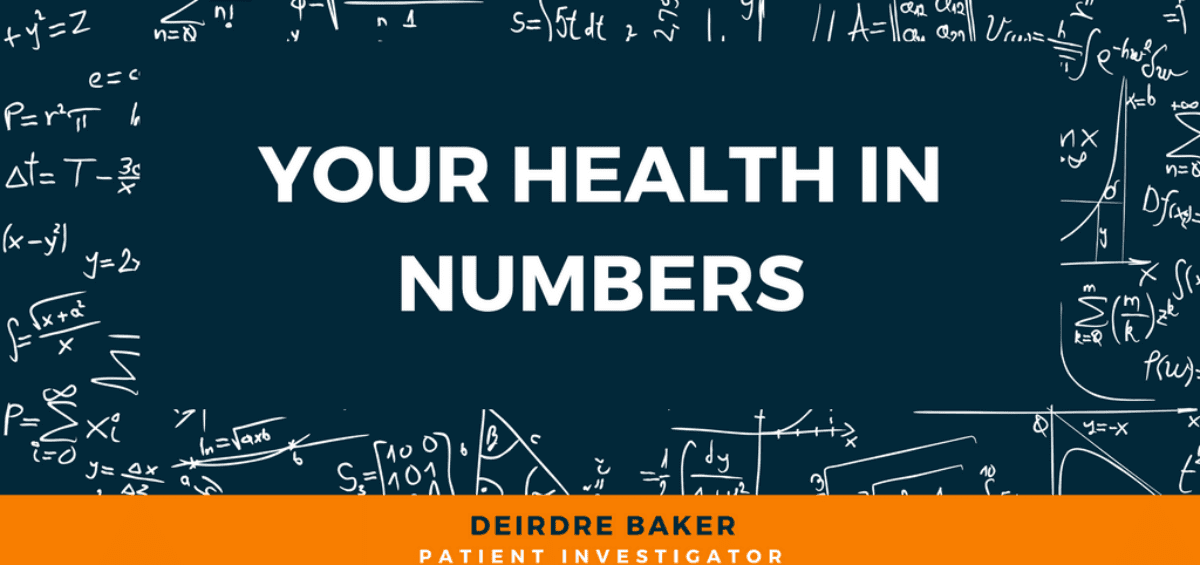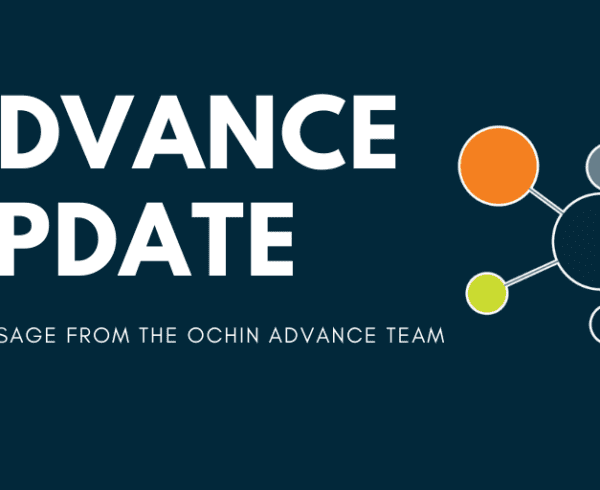Written by Patient Investigator, Deirdre Baker.
This article originally appeared on Community Research Laboratory and is being reprinted with the authors’ permission.
Okay, cards on the table here; I am not a statistician. I was jolly chuffed to receive top marks in Algebra. “Real Maths” such as linear regression analyses and finding sums of Poisson-distributed random variables are to me as remote and forbidding as the peaks of the Himalayas.
So, when looking at studies like ACCESS, in which researchers propose to look at numbers, (which are logical and precise), to learn things about people, (who are chaotic and complex).[1]
I tend to find as many questions as I do answers.
The ACCESS, (Accessing Community Cancer Care Insurance Expansion) study uses data from Community Health Care facilities in the 19 states that report to the ADVANCE network. Ten of those states chose to expand Medicaid coverage under the Affordable Care Act and one state, (Wisconsin) decided to expand Medicaid under its own state budget. The other eight states represented in the network opted against expansion.
The description of the study piqued my curiosity: what sort of differences between expansion and non-expansion states were the researchers likely to find? I went online and did a bit of research. The following table shows the result of comparing an expansion state, (Colorado) with a non-expansion state, (Florida).
These statistics give the advantage to Colorado. The residents of the Centennial State have a 6.6 percent lower rate of obesity and a 4.5 percent lower rate of diabetes than do the people of Florida. The hypertension, rate in Colorado is 10.8 percent lower than is the hypertension rate in Florida.
Could it be that Colorado’s decision to use the ACA to improve access to health care is producing benefits for its citizens that the people of Florida are not receiving?
I tested that theory by looking at some statistics from previous years. The following table shows health statistics for Colorado and Florida for 2005, and compares them to the numbers from 2015.
Former US President Barack Obama enacted the ACA in 2010. So, back in 2005, those healthcare reforms can’t have been producing any influence. In 2005, the obesity rate in Colorado was 4.9 percent lower than was the obesity rate in Florida. That same year, the prevalence of diabetes was 3.8 percent lower and the prevalence of hypertension 7.5 percent lower in Colorado than in Florida.
It seems logical to conclude then, that whilst the ACA may be making a difference to the health outcomes in states that embrace it, it is not causing the differences we see between the health of Coloradans and that of Floridians.
I hope that the above examples illustrate a point: many factors influence our health. The provision of health insurance coverage is only one of them.
To achieve their aims, the ACCESS researchers must separate the influence of one factor, (access to affordable health care), from the influence exerted by dozens of other factors.
This may be as good a time as any to introduce the Social Determinants of Health. These are a cluster of non-medical factors that have a powerful influence on health. In alphabetical order, they are:
- Education
- Employment
- Food Security
- Housing
- Income
- Social Support.
Some of these may seem obvious. Imagine that you must stay in dormitory-style rooms in a homeless shelter, where if one person catches a virus, everybody gets that virus. Or, imagine that you are in Section 8 housing, but your neighbor is an alcoholic with anger management issues, or you have lost your job and can’t seem to find another one, no matter how hard you look. Or, imagine that 70 percent of your wage goes to paying the rent – leaving you to make choices such as, “Do I want food or electricity? I can’t pay for both.”
It probably would not surprise you to learn that living in those circumstances affects people’s health. Other effects of the Social Determinants may be more subtle and unexpected. You will already be familiar with the correlation between obesity and ill-health. But, did you know that in the developed world, there is a negative correlation between education and obesity?
The OECD Journal published a study in 2011, Devaux, Marion, et al, (2011) “Exploring the relationship between education and obesity” OECD Journal of Economic Studies Vol. 2011/1
This study looked at statistics for four OECD countries, Australia, Canada, England and Korea. (OECD, by the way, stands for Organisation for Economic Co-operation and Development.) In all four countries there was a strong, linear relationship between increased educational attainment and decreased likelihood of obesity, at least in women. This graph shows the relationship, with the Y-axis showing the probability of obesity.
The relationship was less strong in men.
So, could the Social Determinants help to explain the differences in health statistics between Coloradans and Floridians?
According to figures from the most recent US Census, (2016), the population of Colorado contained a higher proportion of graduates than did the population of Florida.
The unemployment rate in Colorado was 2.9% versus 4.7% in Florida. The average income in Colorado was $60,629 in Colorado; $47,507 in Florida.
According to Apartmentlist.com, the typical rent for a two-bedroom apartment in Colorado in 2016 was $1490, whilst the rent for a two-bedroom apartment in Florida was only slightly lower, at $1400.
That makes the average cost of rent in Colorado about 30% of the average income, and the cost of rent in Florida a still-respectable-but-not-quite-so-comfortable 35% of income. It is theoretically possible then, that the residents of Colorado are more likely to experience housing security than are their countrymen in Florida. It is also possible that people in Colorado are more likely to have funds set aside that allow them to address life’s setbacks before these problems become crises.
So, why am I telling you this, when this blog is about ACCESS and ACCESS studies cancer care among populations qualified for Medicaid?
In my previous blog post I said that the cancer survival statistics you find will be subject to the kind of cancer at which you are looking.
In this post, I hope I have shown that any health study results will depend upon which people you study, where they live, and how they live.
All of this stuff matters because the purpose of studies like ACCESS is to make discoveries that are applicable to public health. For results to be applicable, they must be specific and accurate. And that required all significant variables be taken into account.
In this blog post, I have introduced a few potentially significant variables and indicated that there are many more of these; some which are fairly obvious while others are more subtle.
The subject of the next post will be ways to account for and adjust for variables in statistical studies.
[1] With apologies to fans of B. F. Skinner’s theories about human behavior; because that learned psychologist would argue that neither of those statements about humans is true.
[2] Information in this table is from the website “States of Obesity”, which uses data from the Center for Disease Control’s Behavioral Risk Factor Surveillance System.
[3] Ah, you’ve got to love medical terminology. It borrows parts of words from both Ancient Greek and New Latin, and mashes them up together – in this case to create a word meaning, high blood pressure.
About the Author
“The difference between comedy and tragedy is not so much in the events that you view, but in the angle from which you view them.” <Anonymous Irish comedian>

This story begins with a joke. The ‘action’ bit begins with a leaflet. The text was like a passage from a mediocre medical textbook, and there were no illustrations. You would need to really want the information in that leaflet in order to gain anything from it. That got me started asking questions about health education, which got me started learning about health literacy, and that study made me aware of an extraordinary world of cold statistics and interesting personal stories.
In 2014, I became both a cold statistic and an ‘interesting story’. Toward the end of a routine check-up, I casually mentioned to the doctor about a minor, but annoying symptom that I had been living with for the past several years. “Should I even be concerned about this?” I asked.
As it happened, I did need to be concerned about that. Oh dear; let’s just say that I do not know if any part of my body remains un-probed and private. Add to this the worry, whilst waiting to find out ‘what it is’, and the need to make multiple decisions in which all of your options are unpleasant ones, and it all adds up to some serious stress.
Later that same year, a family member, one whom I love dearly, was diagnosed with cancer.
More doctor visits, more tests, more ‘earnest discussions’ and searching for answers and having to choose between several options all of which suck in one way or another. And all of this happening against a backdrop of helping to care for an extended family member who herself was slowly dying from a combination of cancer and Alzheimer’s disease.
Studies have shown that the hormones we produce during times of great stress or fear interfere with the parts of the brain used for learning. (If you are trying to escape from an angry cobra or fight off a pack of jackals, you don’t really need to do any new learning at that moment.)
However, what is a patient in a health crisis but a person who is experiencing great stress and fear, *and* needing to do a lot of new learning? The more that we know about our health, the better able we are to make wise choices; either for effective self-care, or to choose the ‘least-worst’ options for our treatment if something does go wrong. I believe that ‘a spoonful of humour’ can make all manner of nasty things seem palatable. If we can laugh at something, we can take away some of its power to frighten us. And, if we can laugh, we can learn. And, knowledge is power.













